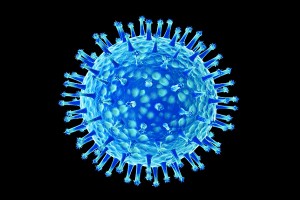August 4, 2015
Highly Pathogenic Avian Influenza: What Does It Mean for City Dwellers?
Information from Iowa State Univ. Extension and South Dakota State Univ. Extension
 The emergence of highly pathogenic avian influenza in the spring of 2015 was devastating for many large turkey and egg layer farms, but the virus also affected smaller “household” flocks, explained Russ Daly, professor, SDSU Extension veterinarian and state public health veterinarian.
The emergence of highly pathogenic avian influenza in the spring of 2015 was devastating for many large turkey and egg layer farms, but the virus also affected smaller “household” flocks, explained Russ Daly, professor, SDSU Extension veterinarian and state public health veterinarian.
“City dwellers are increasingly turning to backyard poultry flocks for food as well as for the enjoyment of raising these animals. These producers, as well as other citizens who enjoy songbirds, gardening and other activities in their urban backyards, have found themselves needing to increase their knowledge of this devastating disease,” Daly said.
While the spring 2015 outbreaks have subsided, Daly said there is considerable worry about a reemergence of the virus in the fall. With this in mind, Daly answers questions on what urban citizens should know about highly pathogenic avian influenza.
What do we know – and what’s left to learn – about these highly pathogenic avian influenza viruses?
They’re different from human influenza viruses. The influenza viruses prevalent during “cold and flu” season almost exclusively affect people and not other animal species. Similarly, these highly pathogenic avian influenza viruses exclusively affect birds. They have not caused illness in people – even those in close contact with a lot of affected birds.
They’re especially severe for some – but not all – birds. The term “highly pathogenic” refers to strains of avian influenza that can cause severe and rapid illness and death in affected poultry.
Of all the bird species studied, mallard ducks were found to carry the virus in large amounts while not becoming ill themselves. They (and likely other waterfowl as well) spread the virus through their droppings (influenza viruses in waterfowl tend to affect the digestive tract rather than the respiratory tract).
Turkeys appear to be more severely affected than chickens. How the virus was carried to large turkey and chicken barns is still being studied. Because of the timing of the outbreaks and the ability for waterfowl to carry and spread large amounts of the virus, it’s generally accepted that those birds carried the virus to these facilities during their migration in the spring – or possibly last fall (there is evidence that the virus could survive up to months in the right weather conditions).
Is there the potential for avian influenza virus to affect poultry in towns and cities?
Because of the presumed role that waterfowl play in HPAI transmission, anywhere wild ducks and geese congregate could be a potential source for the virus, shed in the birds’ droppings. This could include small lakes and ponds in urban parks, retention ponds or housing developments adjacent to wetlands.
Citizens should keep in mind that these viruses have no effect on people, other animals or the safety of food. A backyard playing host to children, pets, songbirds and gardens will be unaffected – even if the virus somehow gets dropped or blown into that space.
A backyard hosting chickens, ducks or other domestic poultry is another story, however. Backyard poultry flocks have not been spared by HPAI outbreaks, and infections of poultry within city limits are possible – and more likely if the yard is near a site where wild ducks and geese spend time. They should not be allowed access to nearby ponds or water sources that may have been contaminated by wild waterfowl species.
If backyard flocks are housed near these areas, it may be prudent to provide a solid barrier between the poultry and the adjacent wetland, to prevent contaminated dust or plant material from blowing into the housing area.
Even if birds are physically kept away from these potential sources of HPAI, the virus can still enter their yard if people, vehicles, pets or other animals are allowed to track in contaminated material from outside. Wheels, shoes, boots and paws can all transport HPAI from one place to another if steps aren’t taken to clean and disinfect (or exclude) these materials.
All backyard flock owners should follow appropriate biosecurity measures. Examples of these rules, which are meant to exclude new potentially hazardous germs from entering a population of animals, can be found at http://healthybirds.aphis.usda.gov/.
If any unexplained death loss or illness occurs, a veterinarian should be contacted immediately.
We have more to learn
“We are learning more about the HPAI viruses that recently devastated poultry operations throughout the Midwest. But more remains to be learned,” Daly said.
Daly added that influenza viruses are notorious for changing. “For these reasons, it’s important for all of us to keep abreast of current information regarding this pathogen, especially as wild bird migration commences this fall and next spring,” he said.
To learn more, search #AvianFluImpact on social media and visit tiny.cc/find-answers-now.
Iowa State University Extension and Outreach, (800) 262-3804, 2150 BTo have additional questions answered, contact the ISU Hortline at (515) 294-3108 or hortline@iastate.edu.
Filed Under: Health & Wellness, News
Trackback URL: https://www.50pluslife.com/2015/08/04/highly-pathogenic-avian-influenza-what-does-it-mean-for-city-dwellers/trackback/


